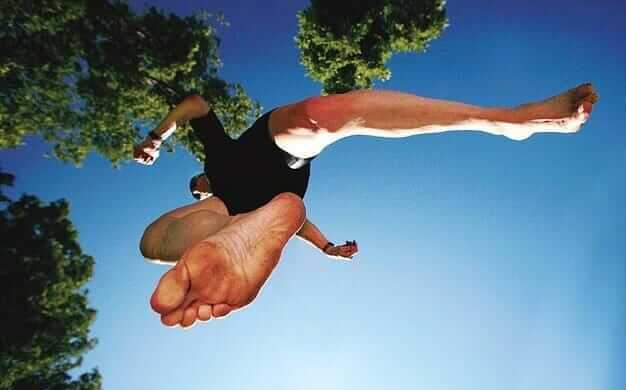The Big Toe and Your Health by William Smith, MS, NSCA, CSCS, MEPD
Do you ever run, walk, navigate stairs, squat, lunge or jump? Chances are you perform some if not all of these movement daily. Involved in everyone is your big toe. Stop and take a peek downward, you see it? The big toe is one of the most important structures in the body when it comes to balance, yet an often overlooked piece of our anatomy unless you have a problem with it. Let’s take a deeper “dive” into the big toe, its function and beneficial exercises.
My wife is considering surgery for her foot, specifically the big toe joint. We’ve been researching both surgical and non-operative care options for some time.
She is not taking the possibility of surgery lightly, nor am I. Both of us have and still are entrenched in the fitness world, thus we tend to lean toward the non-surgical, conservative management approach. My wife and I have worked and taught in clinical healthcare settings so we have that perspective on general outcomes for these types of procedures.
What led to her chronic pain? Dancing, teaching endless hours of group fitness (the body does breakdown from teaching!) and 3 pregnancies to start!
What causes dysfunction in the big toe?
● Injury: sports, banging it on a table, etc.
● Deformity
● Gait Alterations
● Chronic conditions: arthritis, bunions
● Leg Length difference
● Lack of movement: weakening of the foot complex due to lack of use
● Flattening of the Feet: the arch tends to flatten out as we age
The big toe joint (i.e. 1st metatarsal joint) is in responsible for many important functions related to balance and movement. The focus here is to provide a selection of exercises that will benefit you, based upon my professional and personal experiences, while bringing awareness to the significance of this joint. There are many, many experts that specialize in research on the foot and toe far beyond the scope of this article. With a brief google search you can find anything and everything about the big toe.
During the push-off phase of walking, the big toe is the final point of contact that pushes us forward. Without this push-off phase the calf muscles can atrophy, for example, leading to shuffling, poor motor control and likelihood of greater instability during activities of daily living. Globally the toe, foot and calf ‘coordinate’ to assist in maintaining upright posture, which is an added benefit of strengthening the foot and toe.
A second area of importance is the outside-inside movement of the foot that occurs from heel strike to toe push off. If dysfunction exists from bunions, arthritic pain, or inflammation, the foot may not pronate properly thereby stressing the entire leg.
Recommended Exercises:
I’ve bulleted a list of exercises with links to exercises for your Big Toe and surrounding structure. These exercises have been used with my clients and included in a selection of my books.
● Doming
● Position point pressing: The MELT Method Hand & Foot series is absolutely the best foot self-therapy available.
● Heel to Toe Rocks: decent video. Limit your pelvic movement.
● Foot Grabbing
● Tennis Ball Roll
● Rubber Band around Toes: Melt Method exercise. Amazing certification! Scroll down in article to see exercise.
● Single Leg Postures
My recommendation is to always consult with your healthcare provider prior to beginning any regular exercise routine. Begin with less and work on challenging yourself. Start with the exercises you enjoy the most and find most beneficial, you are more likely to stick with the routine.
Get those feet and toes moving! Foot health is important!
Recommend Resources: The Best Education and Knowledge Around!
This by no means is an exhaustive list! Great place to start when it comes to anything to do with the human body, how it works and best practices.
● Gil Hedley: Gil is a leader in the study of the human form. I’ve had the gift of spending many hours with him in the anatomy lab learning about the human form, including the big toe!
● Sue Hitzmann: Sue is the creater of meltmethod.com. I’ve had the pleasure of going through her MELT certification and spending time in the anatomy lab together. I’ve recommended her methods to all my clients, and use her protocols myself. Her hand/foot method truly alleviates pain and discomfort. Highly recommend purchasing her home Hand & Foot Kit.
● Tom Meyers: Anatomytrains.com
● Gray Cook: look up Functional Movement Screen. Gray is a physical therapist and leading advocate for movement education. I completed the functional movement screen training many years back. This training has provided me a strong foundation of movement understanding.
● Hospital for Special Surgery: arguably the best center of care for orthopedics. I had my ankle reconstructed from a rugby injury at HSS (compound, open reduction-nasty). HSS provided athlete care when I was a strength coach at St. John’s University. They are the tops.
WILLIAM SMITH, MS, NSCA, CSCS, MEPD, completed his B.S. in exercise science at Western Michigan University followed by a master’s degree in education and a post-graduate program at Rutgers University. In 1993, Will began coaching triathletes and working with athletes and post-rehab clientele. He was a Division I Collegiate Strength Coach and has been competing in triathlons and marathons since 1998, finishing 7 marathons and 1/2 Ironman. Will currently works for the #1 Ranked Hospital developing Employer-Based Health and Wellness Programs for Companies, specializing in installing On-Site Medical and Health Suites to assist in lowering employee healthcare costs. Will has advanced specialty certifications in cancer, post-rehab exercise and athletic development. Will has also co-authored the definitive guide to triathlon training, Tri Power. He is also the author of several books in the popular Exercises For series including Exercises for Heart Health, Exercises for Back Pain, Exercises for Brain Health, and many others.





